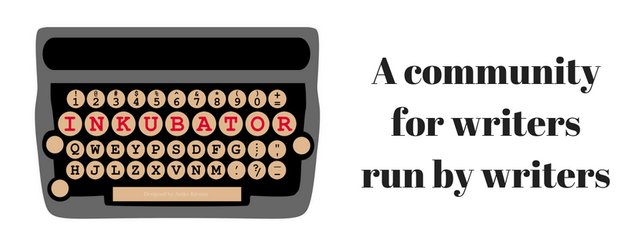Character Arcs: Subtle Yet Essential
One piece of a story that is often neglected by newer writers is the character arc. Part of the reason this is easily overlooked is because we don't think about it when we read. However, although we're not consciously aware of it, it has a great impact on our satisfaction with a story. Many times when a story feels incomplete or unsatisfying, it is because this factor has been overlooked. While any character in the story can have a character arc, it is the main character's arc that is most critical. It is this arc that is most prone to influencing our satisfaction with the story. The character arc is the pattern of growth or change that a character displays over the course of the story. The most common kind of growth is a character that goes from being weak to being strong. For example, you take an average geek who has no visible strength and is subjected to bullying. Then you put him in a situation where he saves his bully from something even worse. He learns that his brain is more important than physical strength and goes from victim to hero. However, the character doesn't need to change to actually grow. Sometimes the growth is becoming aware of the value of who you already are. But for this kind of arc to actually work you really need to have an intense conflict. For example, take Joan of Arc. She maintains who she is through extreme torture. There may be a moment of self doubt, but the character comes out even more convinced of what they believe or who they are. So the growth is in awareness as opposed to change. It’s important to note that I have oversimplified character arcs here. Since most of the writers I'm working with right now are working on short stories, the arcs really need to be condensed. Also I'm not dealing with negative character arcs at all. These are more challenging to explain and would not be relevant to the type of writer who would benefit from this article anyway. In very basic terms, implementing a character arc involves three stages. The middle segment is generally the one that grows and spreads out in longer works of fiction. This is often called the Try/Fail Cycle, so you can look that up for more information. The hard part is often making the impetus to change sufficiently compelling in a short work to be believable, especially if dealing with a significant change. Our suspension of disbelief must be maintained. Remember to keep the revelation subtle. You don't want to be pounding your reader over the head with a sledgehammer, as tempting as that may seem at times. You need to show, not tell, the change. Saying that a story is plot-driven as opposed to character-driven is often an excuse to neglect a character arc. But even with plot-driven stories, you need credible characters and the arcs are part of this. Adding or fine-tuning the character arcs hiding under your plot can only improve your story. It gives an additional layer of satisfaction and can potentially raise your story from mediocre to great. One of the best ways to learn about character arcs is to study those in your favorite works of fiction. The type of arc and what people call it isn't as important to understand as how it can improve and add depth to your writing. Seeing what works and what doesn't work in the stories written by others makes it easier for us to pay attention to and benefit the most from the subtle effects of the character arc on our own stories. My recommendation is to sit down with some of your favorite works, regardless of genre, and take notes on the arc of the main character. How is the character presented initially? What conflicts are presented that push the character out of his comfort zone? How does the character react to these pressures? How does the character change or grow throughout the book? Once you are aware of a character arc, you can also consider how it impacts your satisfaction--or lack of it--with the story as a whole. So now you're sitting there with a zillion thoughts about character arcs in your head or staring at your most recent draft bemoaning the gaping holes in your arc. How are you supposed to use all these ideas? How you write varies from person to person. Sometimes you just sit down and it all comes to you. Sometimes you start with the character or the opening scene or the ending but can't make the rest come together. You also might have one situation one time and another the next time. All you can do is try until you find a technique that works for you. One of the first things you can try is sit down and make notes on the character and the arc. Write down a rough description of your character at the beginning and another of your character at the end. What has changed and how are you going to show that in your story? If you are starting with a plot-driven story, think about how the plot events can influence your major characters. Will they come through the events unchanged but with a greater awareness of themselves? Or will the events change some part of them or how they act? Take the pieces you have, be they beginning, middle, or end, and try to figure out how the character proceeds from there or how to get the character where you want them to be. Sometimes the events shape the character. Other times the character shapes the events. Use your peer review group or test readers to see how they feel about the story. They may not be consciously thinking about the arc, but you can bet it will influence how they feel about the story. Having a recognizable arc on at least the main character of your story will make it more satisfying for your reader. Although the arc may be subtle, it really does have a big impact. If you don't already have a peer review workshop or want one serious about mainstream-quality publishing, feel free to follow the link below and check out @ink-ubator. For more of my writing articles or examples of my fiction and poetry, check out my blog.
Character Arcs: Subtle Yet Essential
Character Arc Basics
Implementing an Arc
Improving Plot-Driven Stories
Learning More about Arcs
Putting It Together

Absolutely right. Although maybe you should ad a caveat at the beginning, to warn people that once they start to understand this mechanism, they won't be able to read a book in the same way ever again.
For me it helped in that it helped me put words to why I felt how I did about a lot of books. But getting handed quality routinely on the Block and spending so much time being analytical has made it more difficult to turn it off and just escape into a book. I was already prone to highlighting annoyances but now it is harder to get to the end of very flawed books when I know I could pull something better out of the queue... Or at least pull out something where the author might value my feedback as opposed to dreading what my review says when it hits Goodreads.
Excellent article, Bex. Please keep 'em coming. I think people appreciate this kind of detailed info about writing.
I will TRY!
This is wonderful education. I think for me the character arc typically comes to me after I explore the character and give him or her time to come into focus. I wish there was a better, faster way, or that it naturally came to me, but my personal method is a little like sculpting. I start with a chunk of stone (blank paper) and have to discover how the character Is revealed to me as I write.
Even if we have a plan, they sometimes change on the way. It really is about finding the tools that work for you--but being open to trying others if you get stuck one day.
Thank you for your post. I am in the process of writing a memoir about an unforgettable online dating experience and this information will be beneficial for me. Although my characters are real in life, your post helps me understand how critical it is to portray their personalities and transformations throughout the book. The title is "A Shoebox House". I created a web site and FB page that I use to post excerpts of my rough draft, including descriptions of my characters. My goal is to publish it in early Spring. I researched when to start promoting new books and the time is now... before it's even done. I love the Steemit posts that have provided the education and support that I need to accomplish my dreams in writing.
If you are interested in my sites...
www.rhondaphelps.com
www.thewritekindofcrazy.com
Have a fabulous day!
Peace...
If you are making parts of your book available, you want to check out the Ethics in Publishing post on the writers' block account. Allowing too much out fully in public can give limitations when you publish through Amazon. But thank you for the feedback. Happy to have helped. With a full length novel, you will want arcs on more of your characters.
Thank you for the advice. I read the post you referred, and it is helpful. I will reconsider what I post in the future. In the past, I have posted excepts of my rough draft, which contain between 200-500 words. It is likely that I will have edited the draft by the time it is published. The assumption that I am posting for marketing is somewhat correct, but also includes my desire to improve my blogging skills; most of my posts are unrelated to my book. Steemit has been a great resource in all areas and I respect the content of feedback and posts.
I've been thinking about this very thing lately as I plan to work on some longer stories. Great article, I hope there's more stuff like this coming!
this is amazing and it is wonderful on discord with thewritersblock,thanks for this @bex-dk
There's nothing quite like getting to the end of a book, putting it down, and thinking, Wow, I've come a long way with these characters.
Nailing the character arc throughout a longer work is so hard to do, but you're damn right it's important.
When I first encountered The Writers' Block, I had some background awareness of character arcs, but did not know the term "character arc." Hanging out in the block with some outstanding writers has helped fill in both my understanding and my ability to label this concept.
Your clear and explicit article has also refined, clarified, and expanded my understanding of what character arcs are, how they can be used, and of the variety of arcs that can be employed to make my stories more engaging. Thank you.
😄😇😄

Thank you @bex-dk now i understand what is arc. Not totally but close. I will keep it in mind and i'll do what you have said about my favorite books and i will try to see the characher arc grow. Thank you for such an amazinge post.
Great article. I write about writing more from an archetypal perspective which itself makes the writing more character-driven (using, for example, the hero's journey model) so there's an advantage that trough that there's always the character arc to some extent taken care of but on the other hand more troubles occur with world building and so on...
Can I ask what character's arc from books, tv or a movie do you consider to be the best?